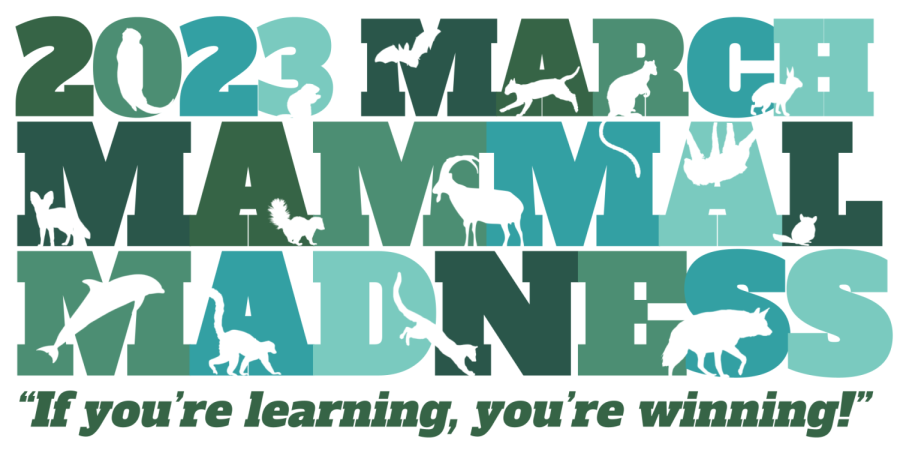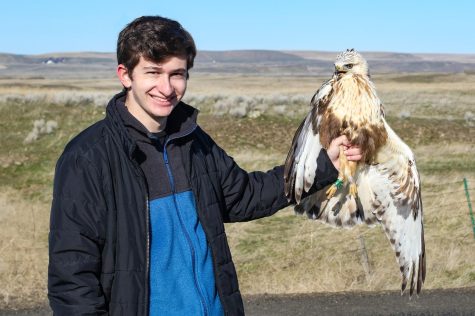March Madness gone wild
March Mammal Madness takes the familiar bracket format and pits Earth’s animals against each other in combat
COURTESY OF MARCH MAMMAL MADNESS
The official March Mammal Madness logo.
March 29, 2023
Every year, millions of Americans make brackets for March Madness in the hopes of correctly guessing which NCAA basketball teams will come out on top. It is a national tradition well-known to many, even to those who do not participate.
However, very few know about a similar event in the biology world dubbed March Mammal Madness. This event was founded in 2013 at Arizona State University, taking the familiar bracket system and applying it to various animals from around the world.
“It’s fun to see which animals win the competition and if my predictions were accurate or not,” Natalie Graves, senior wildlife ecology and conservation sciences major, said.
The animals are pitted against each other in simulated combat, using detailed species knowledge to give them a seed that influences the otherwise random odds of winning each round. Much like the real March Madness, this means that many face-offs go according to plan while a few end in major upsets.
When the battles do go down, experienced wildlife biologists spin detailed stories based on each species to tell a tale of the winner’s success and the loser’s demise — though not every battle ends with a death. Some simply end with an animal backing down or fleeing, much like the real world.
These battles are dictated and described by a dedicated team each year. Most public participation simply involves making a bracket and ranting on Twitter when competitors “unjustly” lose (much like many do during March Madness), but wildlife ecology professor Lisa Shipley has worked to get her class more involved.

Professor Shipley’s Wildlife Ecology class discusses the recent March Mammal Madness bracket results, March 20th.
For the past few years, Shipley has had her class submit brackets at the beginning of the competition for extra credit points based on bracket accuracy, as well as offered additional points on a weekly basis to those who keep up with the competition and can answer questions about the animals that won or lost.
Additionally, Shipley ties the competition into the course material, randomly assigning each student one of the bracket’s animals to research for both a written report and a presentation.
“I think it’s a good way to bring together all the things we’re learning about animal ecology,” Shipley said. “I want to incorporate both speaking and writing in a fun way and it provides kind of a central point … to have a little fun, have students learn something new and also bring in all the things we’ve been talking about in class.”
Students have said that their enthusiasm around March Mammal Madness has spread to other people, getting those who would normally never hear about the competition to show interest and get involved, Shipley said. She also said that she makes her own brackets with her family and lab coworkers, though her choices to pick her favorite animals over the higher seeds haven’t helped her in winning.
Shipley assigned Graves, her student, the checkered elephant shrew as her designated species this year. The small mammal is rodent-like with a long nose like an elephant’s trunk and, according to Graves’ research, can run up to 20 miles per hour.
Though the classwork can feel like exactly that, Graves said she is still enjoying participating in March Mammal Madness.
Unfortunately, Graves’ elephant shrew lost its first battle, seeded 13th in its bracket and unluckily starting up against the 4th seed, striped dolphin. The official March Mammal Madness Twitter account described the whole battle live, as it does with all the others.
With the competition currently at its Sweet 16, there’s still plenty of time to get involved and see how much fun it can be. As Shipley said, “people who aren’t necessarily interested in the phylogeny can still find something of interest and enjoy the competition.”












